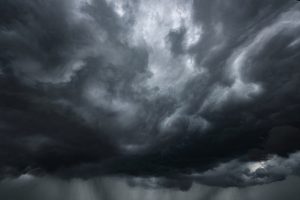 From 1953 to 2020, there have been 3,977 natural disasters categorized by FEMA. These include severe storms, hurricanes, tornadoes, earthquakes, fires, droughts, floods, and snow and ice. All 50 states have been impacted by at least some of these disasters, with some states, such as Texas bearing the brunt while other states such as Rhode Island being impacted by relatively few.
From 1953 to 2020, there have been 3,977 natural disasters categorized by FEMA. These include severe storms, hurricanes, tornadoes, earthquakes, fires, droughts, floods, and snow and ice. All 50 states have been impacted by at least some of these disasters, with some states, such as Texas bearing the brunt while other states such as Rhode Island being impacted by relatively few.
Natural disasters can be devastating to a region, and home and small business owners in particular may be particularly at risk of losing their homes, livelihood, and belongings should one occur. With climate change beginning to cause an uptick in the rate of natural disasters across the country, property owners need to be better prepared to help their property weather any potential damage. In addition, natural disasters can have a far reaching impact through many parts of the building industry in general. Between regulations for new homes constructed in disaster prone areas to the rebuilding that must be done after a disaster has happened, natural disasters can create ripples that ultimately have greater lasting impacts after they’ve passed.
Professionals and services that are designed to help assist home and business owners in preparation should make sure they know what disasters are likely to hit their area, and what steps are most impactful for home and business owners to take, as well as what consequences they can expect for the area and the industry as a whole.
Most Affected States
No states are immune to natural disasters, and all will experience them on some scale. However there are a few states that experience more disasters than others, which puts homeowners in these particular areas at higher risk.
Texas has the most disasters, with a total of 351 over the timespan recorded. California comes in second with 314. Both states experience fires, floods, and severe storms, with Texas also seeing numerous hurricanes and California experiencing earthquakes. Texas has also seen the most fires and floods of any other state, with California seeing the most Earthquakes.
In addition to these states, Oklahoma, Washington, and Florida all see more natural disasters than average at 194, 160, and 152 respectively. Of these, Florida is more impacted by hurricanes of any other state while Oklahoma experiences the most severe storms. Washington sees a significant number of fires, as well as severe storms and floods.
New York state has the unique distinction of being the only state that has experienced each type of natural disaster, as well as seeing the most snow and ice storms of any state.
Finally, Arkansas has seen the greatest number of tornadoes of any state, while Vermont, New Jersey, Virgina, and West Virginia have all seen the most droughts.
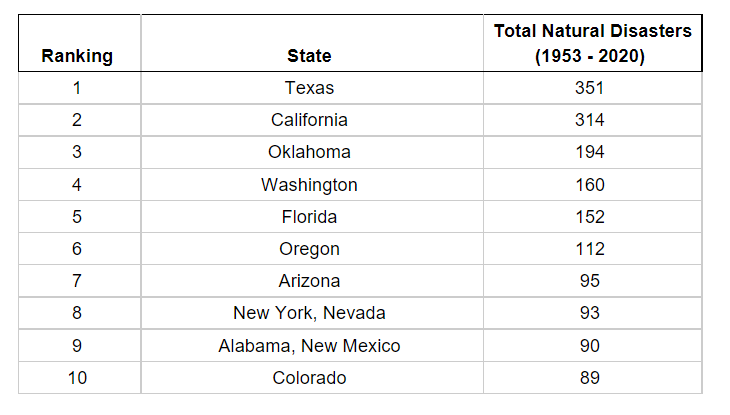
Disaster Preparedness for Property Owners
While there is no way to prepare for every potential issue that a disaster may bring, there are many things that can be done to help mitigate damage, and help homeowners either stay in their homes or get back to them sooner, while ensuring that businesses are able to stay open during times when people may need them most. Depending on the age of the property, and its exact location, some of these projects may be more helpful than others in mitigating potential damage.

Severe Storms
The types of things that can be done to help with severe storm damage can vary by location. If there are numerous trees in the vicinity of the property, then having them trimmed regularly can help prevent some damage from falling limbs ($175 - $750).
In addition, most homes and businesses can benefit from having a stand-by generator ($2,000-$8,000). When the power goes out, a generator kicks on automatically. This can help keep heat or air conditioning running, and can help prevent issues such as frozen or burst pipes from lack of heat. They can also help businesses recover faster and stay open longer, which can assist the community as a whole.
Depending on the type of storm, storm windows or hurricane shutters ($2,000-$6,000) can also be helpful in mitigating damage.
Severe weather and storms have caused more than $1 billion worth of damage to hard hit parts of the U.S. in 2021 alone. The damage from a storm could impact the livability of a home, and therefore the real estate costs of those areas. Homes that are well prepared would therefore likely command higher prices at time of resale than homes that are not prepared for what will come.
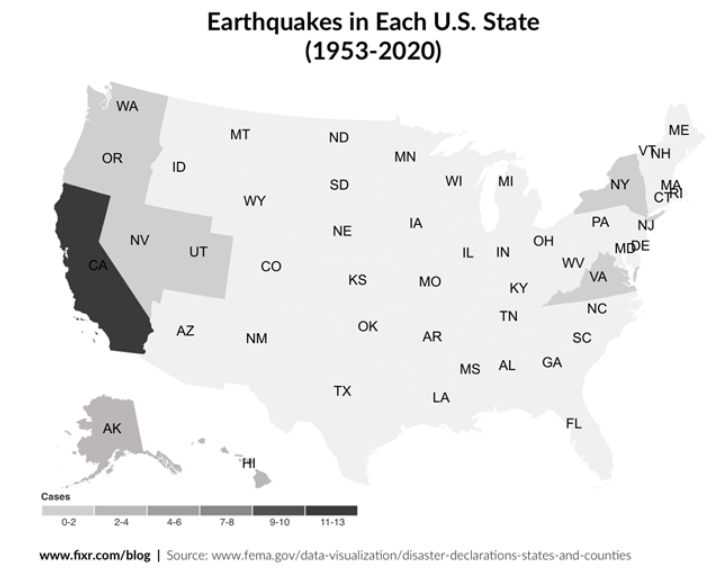
Earthquakes
The number one thing that people who live in and own property in earthquake prone areas should be doing is earthquake retrofitting their homes ($4,000-$8,000). This means helping to reinforce the foundation to support the structure. This can prevent a lot of damage and can help keep the property stable. This can help prevent collapse and loss of life as well as protecting belongings and helping businesses recover faster.
Seismic building codes have been created by FEMA in order to help mitigate damage to properties and save lives in the event of an earthquake. These codes are not universally adopted by states, but states like California that are hard hit by earthquakes do enforce them. This means that any new construction carried out in an area where these codes are in effect must conform to them from the beginning. And while older buildings are not subject to them, any major renovation of a building or home must comply. Builders who work in these areas must understand the codes and how they are implemented so that they can inform their clients and advise them on the best way to proceed with new builds or renovations.

Hurricanes
In many instances, preparing for a hurricane is a lot like preparing for other storms. Standby generators and hurricane shutters are two of the biggest recommendations. Taking down trees with shallow roots and removing dead or dying tree limbs can also help prevent damage during high winds.
Hurricanes are most likely to hit states and areas that are located on the coast. Rebuilding after a hurricane is often regulated in areas to help prevent future damage, which in turn can help mitigate major economic slowdowns in these areas post storm. In some hard hit states, such as North Carolina, it may not always be possible to rebuild a home in the exact spot it once stood before the storm. This means that some coastal communities may have their property values considerably lowered post storm or disaster, particularly if the property can no longer be used as a home or building site. Both builders and real estate agents in areas hit by hurricanes should understand these regulations so as to better advise homeowners and help prevent the more catastrophic economic after effects if areas are considered off limits for rebuilding.
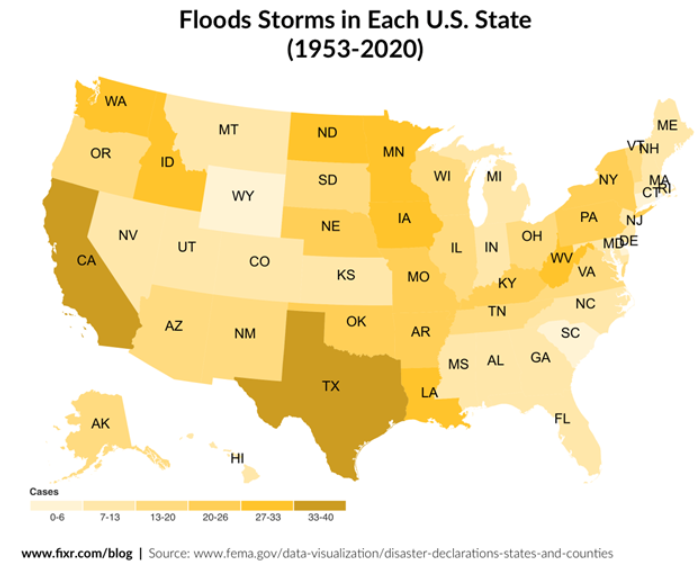
Floods
Homes and businesses that are located in flood zones may have specific needs for dealing with potential issues. For minor flooding, things like sump pumps ($600-$2,000),french drains ($2,800-$6,500), and having a basin under the property for collecting water can help keep the structure dry.
For homes and businesses that may encounter more serious flooding, there may be little that can be done. Making sure that these homeowners and business owners have flood insurance may be the best route, as this can help them recover from the damage more easily.
Flood zones can be categorized by severity. Builders who choose to work in areas that are particularly hard hit may need to follow strict regulations in terms of how and where the home or building can be constructed in order for the home to be eligible for flood insurance. Many insurance agencies may also have strict regulations of their own before they will insure a home against flooding. For this reason, any structure new or existing in a flood zone should be carefully mapped to see where it lands and what affect this may have on insurance.
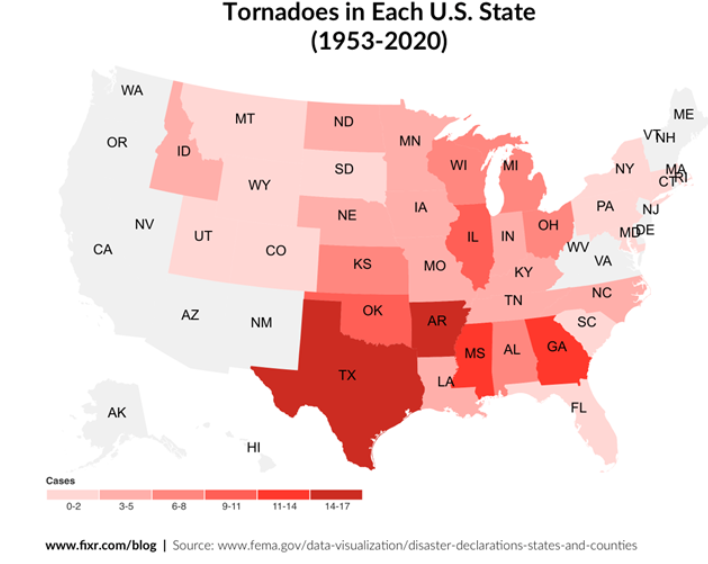
Tornadoes
For homes and businesses that are located in areas that are prone to tornadoes, it’s important to pay attention to areas that are most impacted by high wind. This means focusing on wind-resistant roofing ($6,000-$15,000), bracing entry doors and garage doors ($500-$2,000), and making sure that the structure has a basement or other underground safe area for occupants during the storm.
FEMA also recommends the building and use of safe rooms in areas that are hit by tornadoes. These safe rooms do have specific regulations and codes they must meet in order to be useful and effective. Builders will need to pay close attention to make sure that any safe room is meeting these requirements. Having a safe room on a property in these areas can also increase its resale value and make the property easier to sell as well.

Snow and Ice
Snow and ice storms should be treated similarly to other severe weather storms. A standby generator can help keep the heat running, which can help prevent pipes from freezing. Insulating pipes ($100-$1,000) can also help prevent this issue in homes or buildings where standby generators are not installed. In addition, trimming nearby trees can help prevent heavy snow and ice from causing tree limbs to fall on the property.
Snow and ice storms are grouped in with other severe weather storms in terms of overall damage and building recommendations. Homes and businesses that have stand by generators and that are fully insulated often get a higher ROI in these areas and are easier to sell than those that do not.
Wildfires
There are many different projects that home and property owners can undertake to help mitigate fire damage. The first is installing flame retardant siding such as steel ($7,500-$15,000) or fiber cement ($12,000 - $18,000). This should be combined with a flame retardant roofing material such as metal ($15,000-$25,000). Landscaping should also be cleared away from the home to help create fire breaks, and irrigation systems or trenches can be added to help mitigate flame as well.
After the amount of damage and the impact on the economy that recent wildfires have had in states like California, new regulations have been proposed and adopted for rebuilding that can impact builders, businesses, homeowners, real estate agents, and the community at large. Homes and buildings that are built or rebuilt to help withstand wildfires may be easier to sell and have a higher ROI in general than homes that do not meet current regulations.
Prepare for Disasters and Mitigate Damage
Being prepared for the types of storms or natural disasters that may occur in a given area can help mitigate damage and even potentially save lives. The first step to preparedness is to find out what types of disasters are more likely to hit your area, then take steps to prepare the ones you’re most at risk for. Many different types of disasters can have similar consequences and can be prepared for in similar ways. This can make some steps universal regardless of where you live. Take steps to prepare for disasters and help home and business owners protect their properties to minimize damage and damage related costs the next time disaster strikes.

 DSNews The homepage of the servicing industry
DSNews The homepage of the servicing industry










